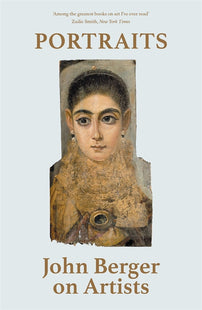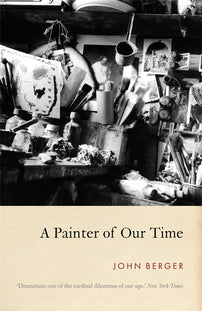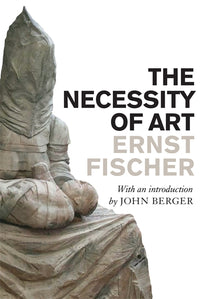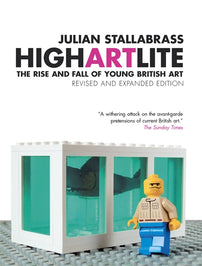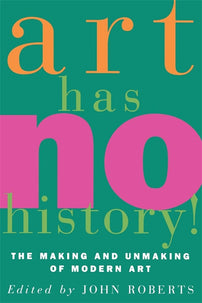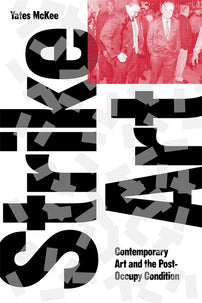The political legacy of John Berger's art criticism
John Berger's unique and uncompromising voice as an art critic owed in large part to his political commitments. A unapologetic Marxist, Berger judged art not simply by its aesthetic value but by its capacity to help its observers recognize their collective power.

In an essay in his provocatively titled 1960 collection Permanent Red — so provocatively named, indeed, that its title for US publication was changed to the far more anodyne Toward Reality — John Berger lamented the unending mawkishness of the Royal Academy’s Summer Exhibition. ‘The worst of Victorian painting sentimentalised spiritual yearning; the worst of Soviet painting sentimentalises the achievements of labour; we, at our worst, sentimentalise cheese-cake’, huffed Berger. He was not, it could be said, a fan of the Piccadilly institution — the cheesecake loving ‘established heart of England’.[1]
Permanent Red was the young Berger’s ground-breaking first book. After his tirade against sentimental art, the Royal Academy, the Venice Biennale, and almost every other art institution besides, he would go on to have an eclectic career that encompassed everything from firebrand art critic and novelist, to broadcaster, film scriptwriter and voice-over artist for Grand Theft Auto.
But every aspect of his dramatically varied career up until his death in 2017 was suffused with politics. Berger was the unlikeliest of things in the British cultural establishment: an avowed Marxist, who was the unruly darling of the BBC and the public alike. There is hardly a student in the land who hasn’t read his 1972 work Ways of Seeing — written as an accompaniment to his documentary of the same name.
Given how revered Ways of Seeing is today, it’s easy to forget just how radical it was. In a series of four thirty-minute episodes on BBC Two (broadcast at the rather unpropitious time of 10:05pm), Berger introduced the British public to a completely novel way of appreciating art. The series was, in part, a riposte to Kenneth Clark’s Civilisation and his traditional approach to art history. Whereas Clark’s Civilisation began in the Dark Ages, and then proceeded chronologically through the Renaissance, Reformation, and Enlightenment — Berger took a rather different approach. Ways of Seeing begins with the work of then-unknown German-Jewish Marxist Walter Benjamin, and popularised the ideas in his 1935 essay The Work of Art in the Age of Mechanical Reproduction. Through the subsequent episodes (and chapters of the later book), Berger expounds Marxist Feminism, explores how art reflects the status of those who commission it, and reveals the artistic bankruptcy of contemporary advertising. It is wholly Marxist in both intention and outcome: the BBC hasn’t seen anything like it before or since.
Permanent Red begins with a tirade against the ‘excessive subjectivity of most of our art and criticism’. For Berger, it is not enough to ‘sympathise with almost all artists’ if you ‘accept what they themselves are trying to do’ and ‘admire their effort’. Instead, he lays claim to a rather higher purpose of criticism: to judge whether an artist is in the ‘pursuit of the truth’. There is a radically anti-individualist strain here: for Berger, real art is never just the artist ‘expressing themselves’ on paper.
Berger himself admits that ‘painting and sculpture are clearly not the most suitable means for putting pressure on the government to nationalise the land’, but he maintains that even still there is a political purpose to art: ‘it increases our awareness of our own potentiality’. All of a sudden, the art critic was not just judging whether a piece met the artist’s aims — or looked ‘good’ on the wall. They were judging whether it helped the viewer become conscious of their own power.
[book-strip index="1" style="display"]In later years, Berger would temper some of his youthful statements. When Permanent Red was republished in 1979, he wrote of his regret at how ‘restrained’ his criticism of the USSR had been, and spoke of a feeling of being ‘trapped in having to express all that [he] felt or thought in art-critical terms’. By then, Berger was more comfortable with being political beyond his art criticism. But, despite the slight disagreements with his 1960s self, the older Berger still makes one thing clear:
I now believe that there is an absolute incompatibility between art and private property, or between art and state property — unless the state is a plebian democracy. Property must be destroyed before the imagination can develop any further. [2]
He cannot, and will not, accept any form of art criticism which ‘serves to uphold the art market’.
How did his Marxism manifest itself in Berger’s criticism? In the earliest essays, there is more than a hint of mocking socialist snobbery. He is disdainful of the type of young artist who ‘doesn’t yet know what to do and so turns his indecision into a mannerism’, and is as equally disdainful of the type of gallery-goer — the ‘poetry lover with her hair in plaits around her head’ — who likes these works. He hates the ‘flowered waistcoats’ and ‘rolled umbrella[s]’ of commercial galleries, and is just as dismissive of national and international institutions. He even attacks the figure of the artist: ‘society has turned …. [him] into something between a spiv, a funny eccentric and a holy hermit in the desert’.[3]
But there is one character for whom Berger spares his ire: the curator of a provincial exhibition in a town hall. Berger knows he is ‘idealising’ this fantasy exhibition, and he knows that its works will be ‘sentimental or unoriginal’ — but no worse, he claims, than those in the Biennale at Venice. But he praises it for ‘its human context’. For Berger, it is the fact that these provincial artworks will ‘form a nucleus for associations, reminiscences, arguments, stories, history’ for those who come to see them that makes them a success. It is this localising impulse which is the first, revolutionary stage of transforming art from a luxury.
When Berger was criticising works of art or exhibitions in the national press – throughout the 1950s and 1960s he was an art critic for the New Statesman — he had the odd, counter-intuitive ability of making the act of seeing the art itself almost redundant. His philosophy of art criticism was all about looking: at the outset of Ways of Seeing, he affirms and explains how ‘seeing comes before words’. But there is a particular delight in his words. Take this description of Barbara Hepworth’s works as an example:
They [Hepworth’s statues] vaguely resemble figures or natural objects and so can be said to have content of a sort. Why do these seem as empty and dead as the others? In any period that lacks a faith which is so intrinsically part of the whole culture that its symbolism can be automatically applied by everybody to every event, the content of a work of art can only derive from definite, specific, particular experience.[4]
I am a fan of Hepworth — and would disagree that her works are ‘empty and dead’. But, when reading this, the force of Berger’s criticism hits me: he moves from her sculptures to the lack of a cohesive faith or ideology in the modern world in one, swift sentence. His criticism and his politics, reflect off the art he describes until they become something to be analysed and admired in their own right.
As Berger’s writing changed through the decades, he began to take up new political crusades. He was a long-term supporter of Palestine, and wrote brilliant, sensitive essays about the lives of those living under occupation. In 2015 — just two years prior to his death — he summed up the disparity at the heart of the Israel-Palestine conflict:
Any comparison between the weapons involved in these confrontations returns us to what poverty is about. On one hand Apache and Cobra helicopters, F16s, Abrams tanks, Humvee jeeps, electronic surveillance systems, tear gas; on the other hand catapults, slingshots, mobile telephones, badly used Kalashnikovs and mostly handmade explosives.[5]
In an essay introducing Mural — a collection of poetry by Palestine’s national poet, Mahmoud Darwish, translated and illustrated by Berger — he was even more forthright. ‘Gaza, the largest prison in the world, is being transformed into an abattoir’, he wrote.[6]
But Berger’s longest-lasting political legacy must be his Marxist Feminism. In Ways of Seeing, he broke new ground when he wrote that a woman’s self is ‘split into two’:
A woman must continually watch herself. She is almost continually accompanied by her own image of herself. Whilst she is walking across a room or whilst she is weeping at the death of her father, she can scarcely avoid envisaging herself walking or weeping. From earliest childhood she has been taught and persuaded to survey herself continually. [7]
He goes on to write that ‘Men survey women before treating them’ and, as such, ‘how a woman appears to a man can determine how she will be treated’. But Berger’s feminism was not just limited to (radical) social commentary. He goes on to apply this to the art world itself, and turns his excoriating gaze to the history of the nude. For Berger, throughout the centuries of painting, ‘the subject (a woman) is aware of being seen by a spectator’ She is only naked ‘as the spectator sees her’. He condemns the hypocrisy of paintings that criticise women’s vanity (‘you painted a naked women because you enjoyed looking at her, you put a mirror in her hand’), and attacked paintings which revealed the ‘submission’ of the female model. The ‘spectator-owner’ and the subject exist in an ‘unequal relationship’; one which Berger identified in ‘advertising, journalism, television’.
[book-strip index="2" style="display"]Berger paved the way for identifying a difference between nakedness and the nude, and drew attention to the depiction of women in media at a time when nobody else was doing so. He was the first critic to use the phrase ‘the male gaze’ — which was later popularised by the film critic Laura Mulvey. His criticism was almost preternaturally modern; and inspired a wealth of art historians after him. His essay would not have been out of place in the catalogue for the National Gallery’s recent 2020 Artemisia Gentileschi exhibition.
This sense of the enduring modernity of his work is fitting: he was publishing right up until his death at the age of 90 in 2017. One of his last collections, Portraits (2015) is a brilliant introduction to the 74 individual artists he writes about — but it is also a brilliant primer on his style: there is criticism through the medium of letters, ad hominem attacks, and vehement tirades. At one point, he angrily proclaims that ‘the oddness’ of Henry Moore ‘is pointless’. So much for Britain’s best-loved sculptor.
It is this angry, cheesecake-hating, bourgeois-bashing critic that so many remember now. And indeed, for good reason: he had a plethora of brilliant insults. At one point, when attacking the esteemed French artist Jean Dubuffet, Berger casually refers to the ‘sickness of bourgeois culture’ after suggesting that Dubuffet’s work looks oddly like faeces.
And in his later years, Berger did not mellow. In his 1992 collection Keeping a Rendezvous, he wrote an impassioned defence of British miners who had so suffered at the hands of the Conservative government during the 1980s. ‘They are out to break you, out to break your inheritance, your skills, your communities, your poetry, your clubs, your home’, he writes, and proclaims he would ‘shield’ any ‘avenging hero’ to his ‘fullest capacity’. Here is political Berger in his whole force — but art is never that far behind. In the same essay, he writes:
I can’t tell you what art does and how it does it, but I know that often art has judged the judges, pleaded revenge to the innocent and shown to the future what the past suffered, so that it has never been forgotten. [8]
Art won’t give the miners back their jobs, or even help them pay their bills — but it might help future generations remember what happened.
Beneath all his jokey barbs, piercing wit, and toilet humour — in 1989, he managed to spin out an entire essay about his outhouse entitled ‘A Load of Shit’ — there is a seriousness of purpose to Berger’s criticism.[9] He wanted art to be taken seriously, but not in the way that sees it sit on gallery walls or sold for record-breaking auction prices. For Berger, art was a means of reaching towards the truth and inspiring something in its viewers and criticism had its role to play in calling out the examples where it failed: a load of old shit, if you will.
Francesca Peacock is an arts journalist, and is currently working on her first book.
[1] John Berger, Permanent Red (1960)
[2] John Berger, Permanent Red, 2nd edn., 1979
[3] John Berger, Permanent Red
[4] John Berger, Permanent Red, although first appeared in the New Statesman
[5] John Berger, ‘The dead help the living to resist in Palestine’, Verso, 2015 https://www.versobooks.com/blogs/news/2298-john-berger-the-dead-help-the-living-to-resist-in-palestine
[6] John Berger (trans.), Mural by Mahmoud Darwish
[7] John Berger, Ways of Seeing, 1972
[8] John Berger, Keeping a Rendezvous, ‘Miners’
[9] John Berger, ‘A Load of Old Shit’, originally published as ‘Muck and its Entanglements’ in Harper’s Magazine in 1989. https://harpers.org/archive/1989/05/muck-and-its-entanglements/

